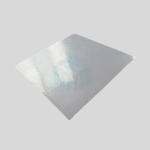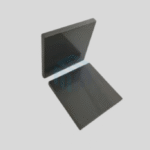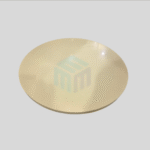Ceramic crucibles play a crucial role in high-temperature applications across a range of industries, including metallurgy, chemical analysis, electronics, and material science. Made from advanced ceramic materials like alumina, zirconia, silicon carbide, and magnesia, these crucibles are known for their exceptional heat resistance, chemical stability, and mechanical strength. However, not all ceramic crucibles serve the same purpose — their composition and design determine their suitability for specific processes.
Ceramic crucibles are versatile and find applications in various industries due to their high-temperature resistance and chemical stability. Here are some common uses of ceramic crucibles across different fields:
Metallurgy: Ceramic crucibles are widely used in metallurgical processes for melting and casting metals and alloys. They can withstand high temperatures required for melting metals like gold, silver, copper, aluminum, and other non-ferrous materials.
Laboratory and Research: In laboratories, ceramic crucibles are used for a range of purposes such as:
Heating and evaporating liquids or chemicals.
Conducting high-temperature experiments.
Calcining, melting, or fusing materials for analysis.
Creating controlled atmospheres for reactions.
Glass and Ceramics Industry: Ceramic crucibles are essential in glass and ceramics manufacturing processes for:
Melting and refining raw materials like silica, feldspar, and various oxides.
Forming glass or ceramic samples for testing and production.
Chemical Industry: Ceramic crucibles are utilized in chemical processing for:
Heating and reacting chemicals in controlled environments.
Synthesizing and processing compounds at high temperatures.
Conducting experiments in harsh chemical environments.
Pharmaceuticals: In pharmaceutical research and production, ceramic crucibles are used for:
Synthesizing and processing drug compounds.
Conducting thermal analysis of pharmaceutical ingredients.
Heating and evaporating solvents or reagents.
Powder Metallurgy: Ceramic crucibles play a role in powder metallurgy processes by:
Sintering metal powders to form solid components.
Heating and compacting metal powders in molds.
Electronics and Semiconductor Industry: Ceramic crucibles are used in the production of electronic components and semiconductors for:
Melting and casting metals are used in electronic devices.
Growing single crystals for semiconductor materials.
Heat treatment and annealing of electronic components.
Art and Jewelry Making: Ceramic crucibles are also utilized by artists and jewelry makers for:
Melting and casting precious metals like gold and silver.
Creating custom alloys and metal compositions.
Experimenting with metalworking techniques.
Overall, ceramic crucibles are indispensable in industries and applications that require high-temperature processing, chemical resistance, and precise control over material properties.
Read also: How to Choose the Right Crucible: Types, Features, and Best Uses for Industrial & Lab Applications
Conclusion:
Ceramic crucibles come in a variety of materials and forms, each tailored to meet specific thermal, chemical, and mechanical requirements. From alumina for general high-temperature use to zirconia for extreme environments and silicon carbide for excellent thermal conductivity, each type offers unique advantages. Selecting the right crucible depends on your application—whether it’s metal melting, chemical analysis, or material testing.
Understanding the different uses and benefits of various ceramic crucibles ensures better performance, longer service life, and safer operations in both lab and industrial settings. Always choose a crucible that aligns with your process conditions and material compatibility for optimal results.
M-Kube Enterprise is a USA company catering customized laboratory products, laboratory consumables, and laboratory solutions in the USA, India, Australia, New Zealand, Singapore, Malaysia, South Korea, Dubai, Philippines, Indonesia, and Vietnam.






